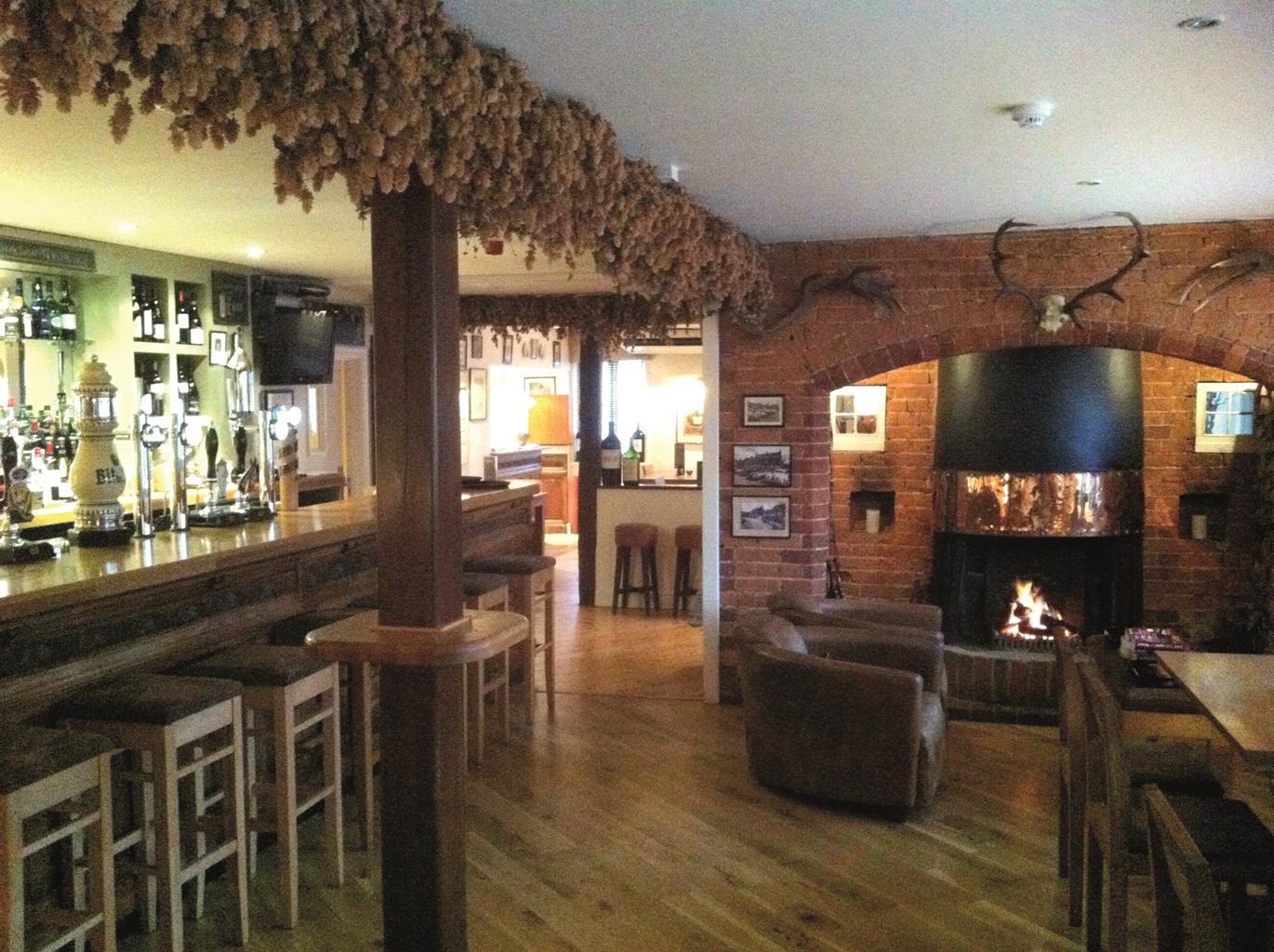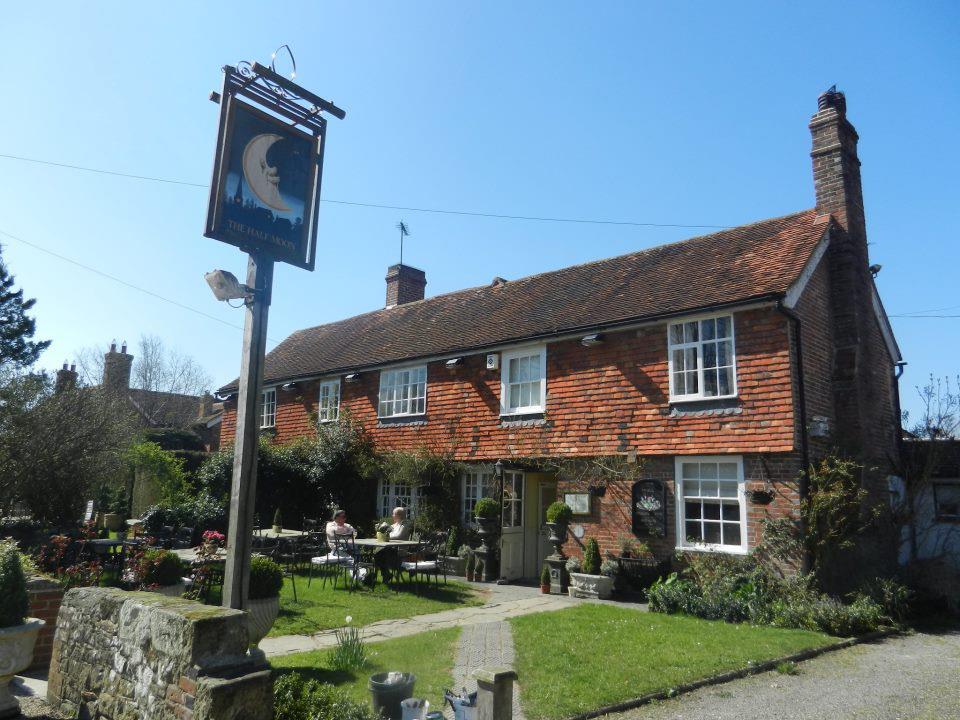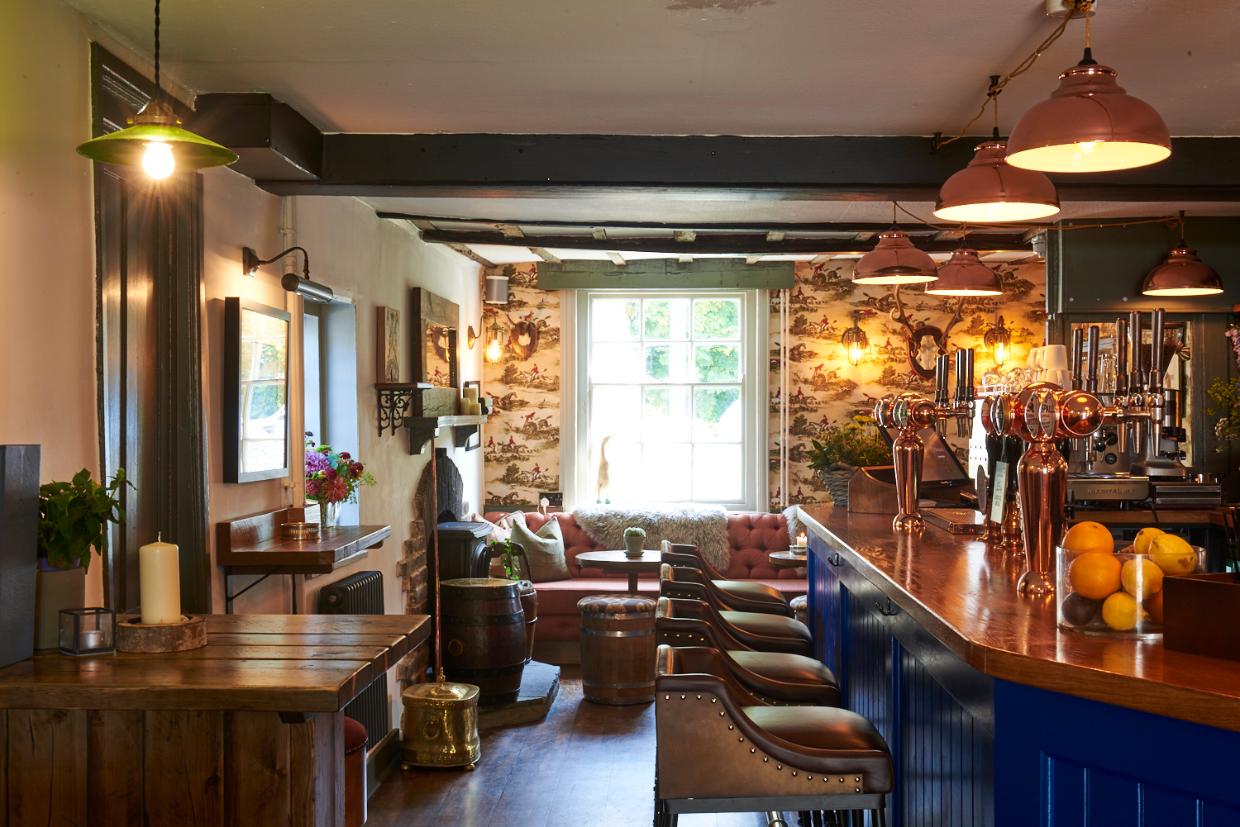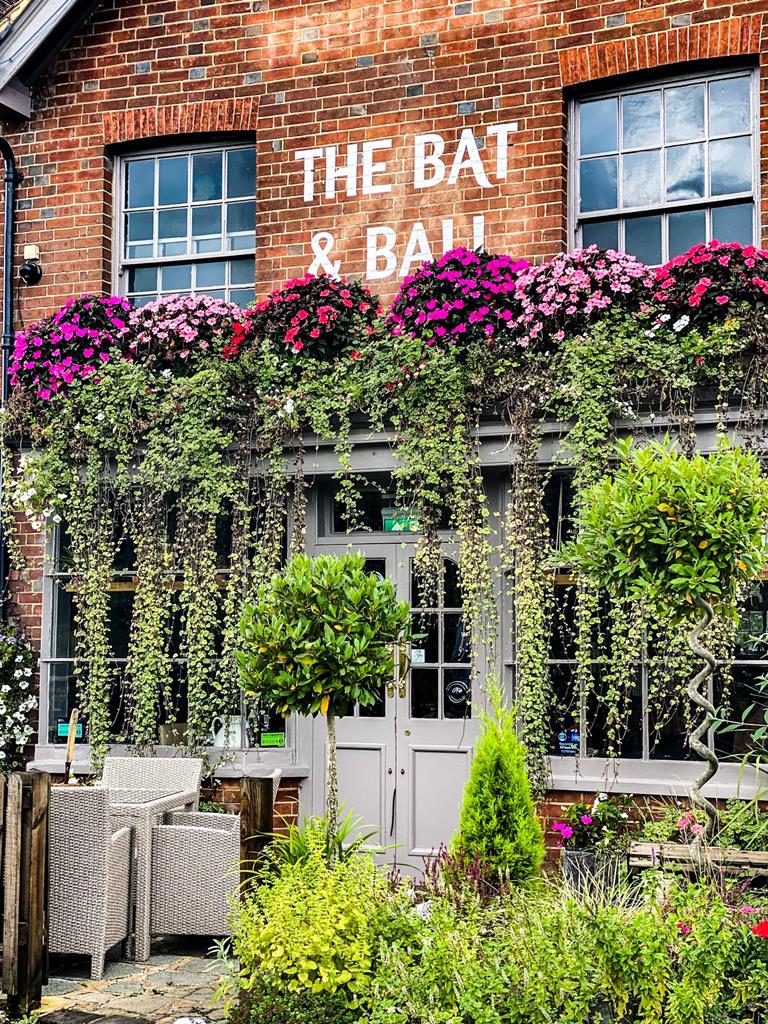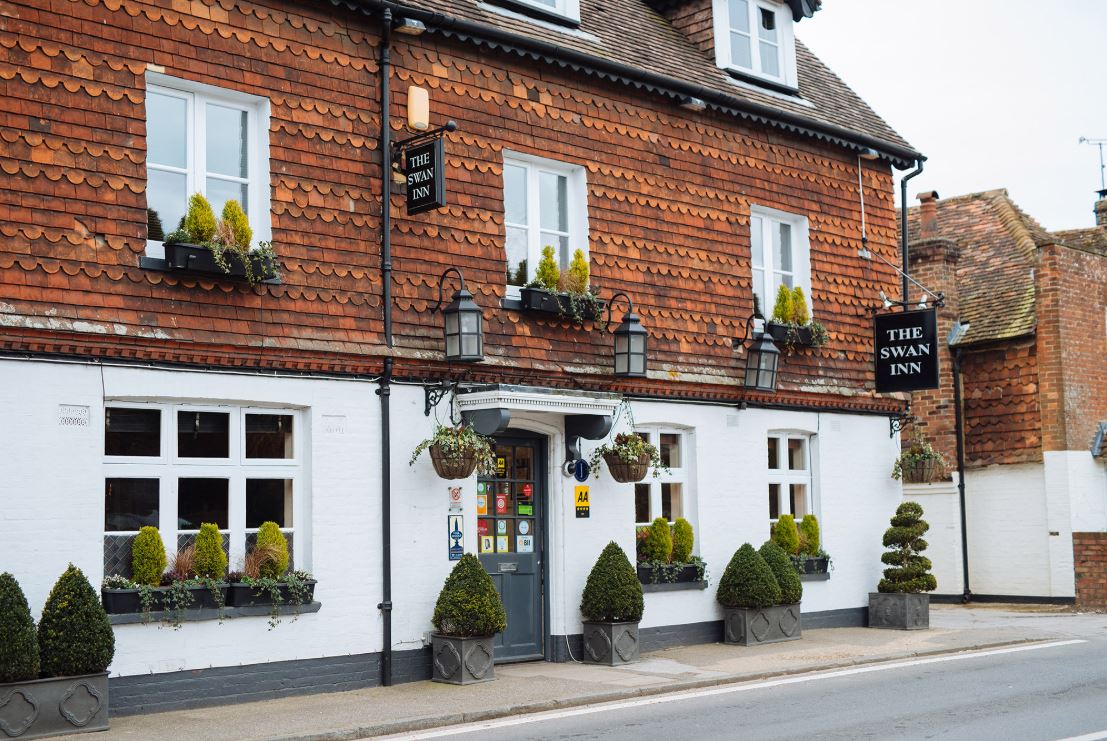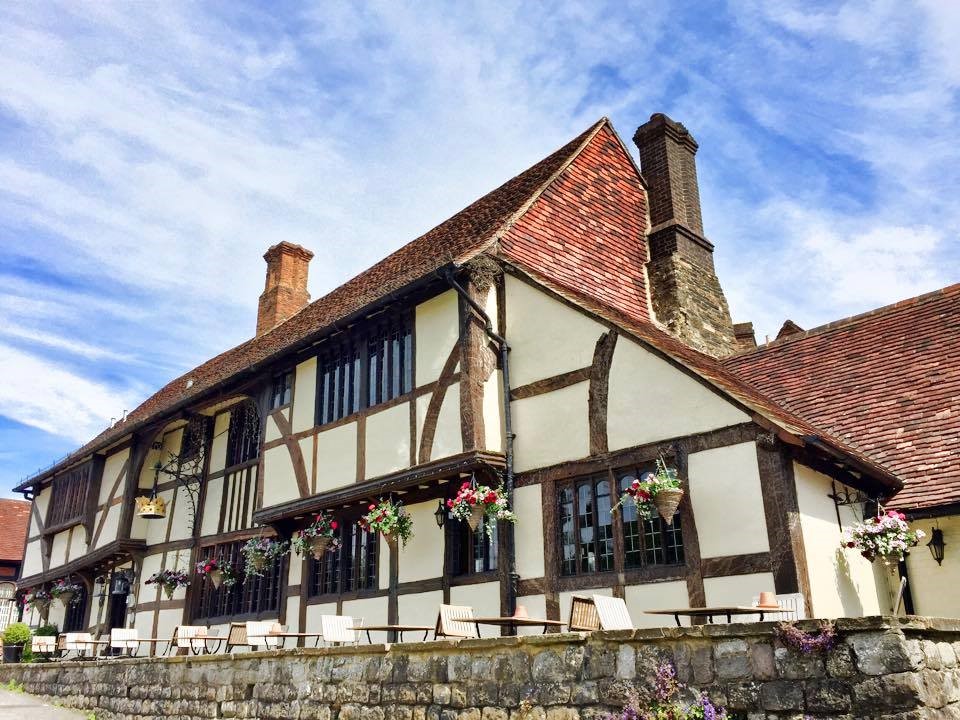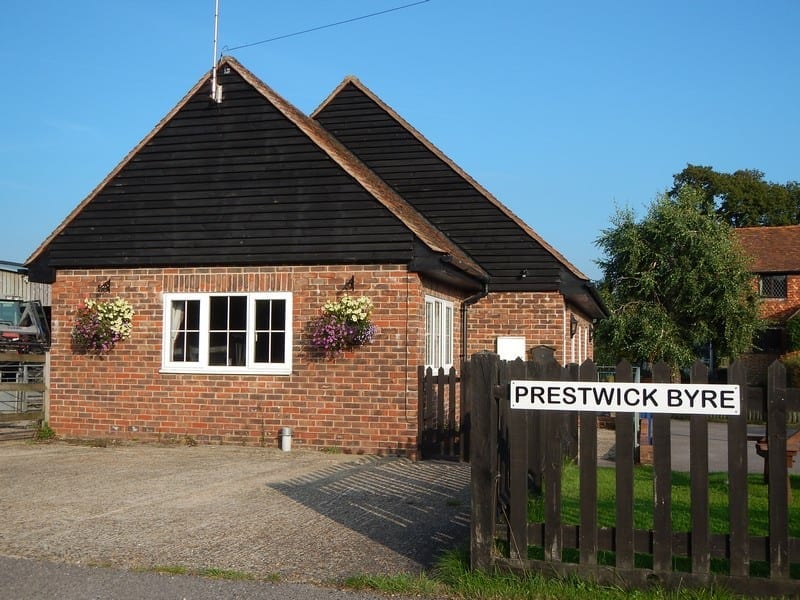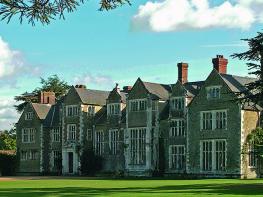A historic building on Cranleigh’s High Street, The Richard Onslow is a classic English village…
Alfold's lost canal

4.7 miles (7.6kms)
About the walk
As you amble through the depths of Sidney Wood, along the sinuous towpath of the long-abandoned Wey and Arun Junction Canal, you can hardly fail to ponder the significance of this overgrown, muddy trench. In the closing years of the 18th century, the Industrial Revolution was in full swing. The roads, such as they were, simply could not cope with carrying coal, heavy raw materials and finished goods over long distances. But in southern England there was an even more urgent imperative. France was in turmoil and the dawn of a new century found Britain engaged in the Napoleonic Wars. Coastal cargoes in the English Channel were at risk and a new route was needed between London and the South Coast.
Building the link
Traffic had flowed by river between London and Guildford since 1653, and the River Arun had been navigable to Pallingham Quay, near Pulborough, since Elizabethan times. All that was needed was a link – and it came in two parts. In 1787, the Arun Navigation was completed northwards from Pallingham Quay to Newbridge Wharf, near Billingshurst. Then, in 1813, Parliament authorised the Wey and Arun Junction Canal between Newbridge and Guildford. It opened in 1816, completing the link between London and the South Coast.
The price of coal in Guildford fell at once by more than 20 per cent, and the canal also carried chalk, timber and agricultural cargoes, reaching a peak of 23,000 tons in 1839. But change was coming, and the following year the London and Southampton Railway forged a new link to the South Coast. There was little immediate impact, but in 1865 the London, Brighton and South Coast Railway opened between Guildford and Horsham, in direct competition with the canal. Within a few years the waterway was out of business and it was abandoned in 1871, though the Arun Navigation struggled on until 1896. The canal lay derelict until, in 1970, enthusiasts established the Wey and Arun Canal Trust to restore navigation between London and the South Coast along the waterway from Guildford to Pallingham Quay. Since 1971, the trust has worked on more than half the route with 24 bridges, 2 aqueducts and 11 locks either restored or rebuilt.
Walk directions
From the car park, walk back towards the road and, just beyond the height barrier, turn left by a short concrete post labelled ‘SEEB Cables’. Walk ahead and keep right at the fork 300yds (274m) further on. Cross over a tarmac path and take a bridleway nearly opposite, and shortly reach a waymarker. Continue to follow the path signed ‘Wey South Path’ as it bears gently right at a fork around the edge of Fir Tree Copse.
Reach the line of the canal at a gate. Turn left and follow the towpath for 1 mile (1.6km). Notice the gentle slope after you pass the ‘Arun 13/Wey 10’ milestone, deep in Sidney Wood; it’s the only clue that this section, down to Point 5, once had eight locks.
A gravelled track crosses the canal at Knightons Court (private). Leave the towpath here and turn left, following the waymarked route, pass a wooden barrier and sign for Sidney Wood and then continue straight over a forest crossroads. Go past a wooden barrier, and pass High Bridge, a large white house on the left, once a lock keeper’s cottage.
Zig-zag right and left across Rosemary Lane, and rejoin the old towpath. After 0.75 miles (1.2km) look out for the ‘Arun 11.5/Wey 11.5’ milestone, and continue for 150yds (137m) until the Sussex Border Path crosses the line of the canal, at Gennets Bridge Lock.
Turn left and follow the Sussex Border Path for 350yds (320m) until you reach a four-way fingerpost. Turn left and follow the hedge on your right. Continue ahead to pass Oakhurst Cottage; now, follow the public bridleway signpost that points your way on a broad gravel bridleway beside several fields and through a gateway and fork right onto a gravel path leading out to Rosemary Lane.
Cross the lane and follow the waymarked bridleway for 0.5 miles (800m). Turn left just beyond a waymarked footpath on your right; then, just a few paces past the prominent ‘Riding by permit only’ sign, turn right up the waymarked footpath through the woods. Soon fork right, then continue over a stile and follow the path alongside the woodland to a broken stile. Continue on the path until it bears left and meets the car park road just beyond a waymark post. Turn left for the short distance back to your car.
Additional information
Former canal tow path, field and forest paths, muddy after rain
Mainly wooded countryside, some views across farmland
Lead required in Sidney Wood
OS Explorer OL34 Crawley & Horsham
Sidney Wood Forestry Commission car park off Dunsfold Road, between Alfold and Dunsfold
None on route
WALKING IN SAFETY
Read our tips to look after yourself and the environment when following this walk.
Find out more
Also in the area
About the area
Discover Surrey
Surrey may be better known for its suburbia than its scenery, but the image is unjust. Over a quarter of the county’s landscapes are official Areas of Outstanding Natural Beauty, and along the downs and the greensand ridge you can gaze to distant horizons with hardly a building in sight. This is one of England’s most wooded counties, and has more village greens than any other shire. You’ll find sandy tracks and cottage gardens, folded hillsides and welcoming village inns. There’s variety, too, as the fields and meadows of the east give way to the wooded downs and valleys west of the River Mole.
Of course there are also large built-up areas, mainly within and around the M25; but even here you can still find appealing visits and days out. On the fringe of Greater London you can picnic in Chaldon’s hay meadows, explore the wide open downs at Epsom, or drift idly beside the broad reaches of the stately River Thames. Deep in the Surrey countryside you’ll discover the Romans at Farley Heath, and mingle with the monks at England’s first Cistercian monastery. You’ll see buildings by great architects like Edwin Lutyens and Sir George Gilbert Scott, and meet authors too, from John Donne to Agatha Christie.
Nearby stays
Restaurants and Pubs
Nearby experiences
Recommended things to do
Why choose Rated Trips?
Your trusted guide to rated places across the UK
The best coverage
Discover more than 15,000 professionally rated places to stay, eat and visit from across the UK and Ireland.
Quality assured
Choose a place to stay safe in the knowledge that it has been expertly assessed by trained assessors.
Plan your next trip
Search by location or the type of place you're visiting to find your next ideal holiday experience.
Travel inspiration
Read our articles, city guides and recommended things to do for inspiration. We're here to help you explore the UK.

